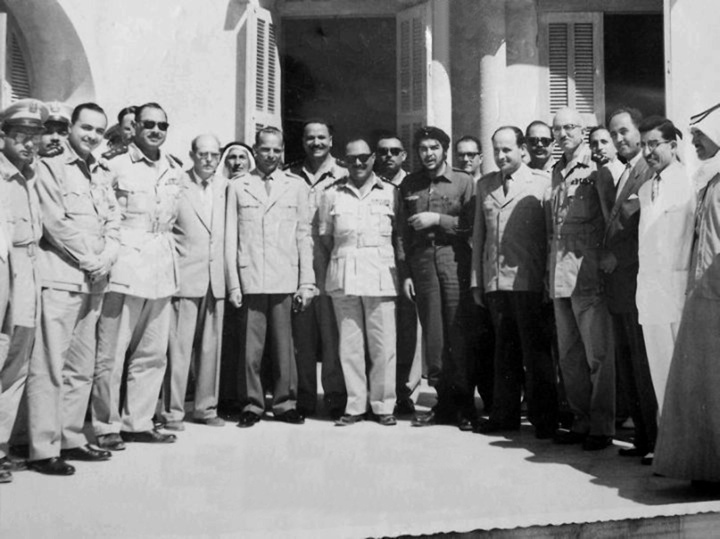|
Al-Moghraqa
Al-Moghraqa is a Bronze Age former settlement in Gaza Governorate of the Gaza Strip in Palestine. It was discovered in 1996 in the town of Al-Mughraqa and investigated in 1999 and 2000 as part of the Gaza Research Project. The site was inhabited in the early 2nd millennium BC, and may have been associated with the nearby settlement of Tell el-Ajjul, which was inhabited at around the same time. Location and topography When al-Moghraqa was discovered in 1996, it was located in a mixed environment combining agricultural land and sand dunes. It covered an estimated . It was established on low-lying ground. History Archaeologists identified three phases of occupation at al-Moghraqa, all dated to the Middle Bronze Age (periods MBA IIb-c) – the early part of the 2nd millennium BC. The date was arrived at based on the artefacts discovered at the site. This period in the Levant was characterised by the development of new societal organisation, with centralised fortified settle ... [...More Info...] [...Related Items...] OR: [Wikipedia] [Google] [Baidu] |
Gaza Strip
The Gaza Strip, also known simply as Gaza, is a small territory located on the eastern coast of the Mediterranean Sea; it is the smaller of the two Palestinian territories, the other being the West Bank, that make up the State of Palestine. Inhabited by mostly Palestinian refugees and their descendants, Gaza is one of the List of countries and dependencies by population density, most densely populated territories in the world. An end of 2024 estimate puts the population of the Strip at 2.1 million, which was a 6% decline from the previous year due to the Gaza war. Gaza is bordered by Egypt on the southwest and Israel on the east and north. Its capital and largest city is Gaza City. The territorial boundaries were established while Gaza Administration of the Gaza Strip by Egypt, was controlled by the Kingdom of Egypt at the conclusion of the 1948 Arab–Israeli war. During that period the All-Palestine Protectorate, also known as All-Palestine, was established with limited reco ... [...More Info...] [...Related Items...] OR: [Wikipedia] [Google] [Baidu] |
Tell Muntar
Tell Ali Muntar is a tell (a mound created by accumulation of remains) about south-east of Gaza City in Palestine. The former settlement is thought to have been occupied in the Middle Bronze Age, about the 2nd millennium BCE. The remains of the settlement cover an estimated . It occupied the highest point in the area around Gaza. Tell Ali Muntar was surveyed in 1998 as part of the Gaza Research Project, but it has not been excavated. The archaeologists discovered mud bricks from buildings and pottery that ranged from the Middle Bronze Age to the Ottoman period. It is likely that Tell Ali Muntar was occupied at the same time as the Bronze Age settlement of Tell Gaza; archaeologists Joanna Clarke and Louise Steel suggest that settlement may have shifted from Tell Muntar to Tell Gaza. UNESCO has verified that more than 100 heritage sites have been damaged as a result of the Israeli invasion of the Gaza Strip starting in 2023, including Tell Ali Muntar.Listed as "Tell Al-Muntar". ... [...More Info...] [...Related Items...] OR: [Wikipedia] [Google] [Baidu] |
Al-Mughraqa
Al-Mughraqa (, also known as Abu Middein) is a Palestinian town in the Gaza Governorate of the Gaza Strip, located six kilometers southwest of Gaza City. According to the Palestinian Central Bureau of Statistics (PCBS), al-Mughraqa had a population of 11,458 in 2017. The town's alternate name, "Abu Middein" derives from the Bedouin Abu Middein tribe that inhabits the area, part of the larger al-Hanajreh tribal confederation. History In 1996, a Bronze Age settlement dating to the early 2nd millennium BC was discovered in the town and named al-Moghraqa. In 2002, during the Second Intifada, Israel carried out demolitions of Palestinian homes in al-Mughraqa. The 2014 Gaza War caused damage to al-Mughraqa's water network; in 2015 the municipality had a non-revenue water rate of 58%, amongst the highest in the Gaza Strip. In late 2023, al-Mughraqa's residents fled south to escape the Israeli invasion of the Gaza Strip. They began to return in February 2025 following a ceasefire. ... [...More Info...] [...Related Items...] OR: [Wikipedia] [Google] [Baidu] |
Tell Es-Sakan
Tell es-Sakan () is a tell (a mound created by accumulation of remains) about south of Gaza City in the Gaza Strip. It was the site of two separate Early Bronze Age urban settlements: the first was a fortified administrative centre of the Egyptian colonies in southwestern Palestine, inhabited from about 3300 BCE to 3000 BCE, and after a period of abandonment a Canaanite fortified city was established around 2600 BCE and inhabited until about 2250 BCE. Tell es-Sakan was positioned along what was probably a palaeochannel of the Wadi Ghazzeh. Its geographical location endowed it with a position of importance and it functioned as a trading post. It may have been established as a successor to Taur Ikhbeineh, a nearby settlement that was inhabited in the 34th century BCE. After Tell es-Sakan was abandoned for a second time, the settlement of Tell el-Ajjul was established to the south, and was likely intended as a replacement. Tell es-Sakan is the oldest known Egyptian fortifi ... [...More Info...] [...Related Items...] OR: [Wikipedia] [Google] [Baidu] |
